House Hunters: Cavity Nesting Birds
Updated: Mar. 19, 2024
Cavity nesting birds move into a nest box or chisel a home in a tree to raise a family. Discover which cavity nesters you can attract.
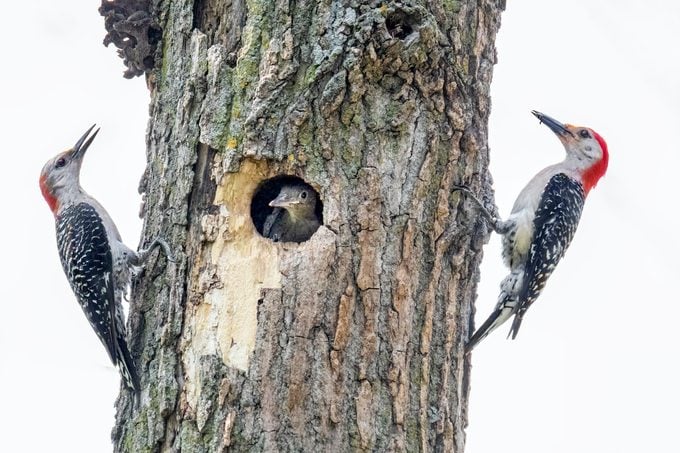
For parent birds, raising a nest full of babies can be a risky project. With predators around every corner, many parents hide their nests among dense foliage or in tall grass for protection. Another approach is to put it inside a tree. This cavity nesting strategy is practiced by all kinds of birds, including some that you can attract to your backyard.
Learn about 9 different types of bird nests and how to spot them.
On This Page
New Cavity Nest Builders
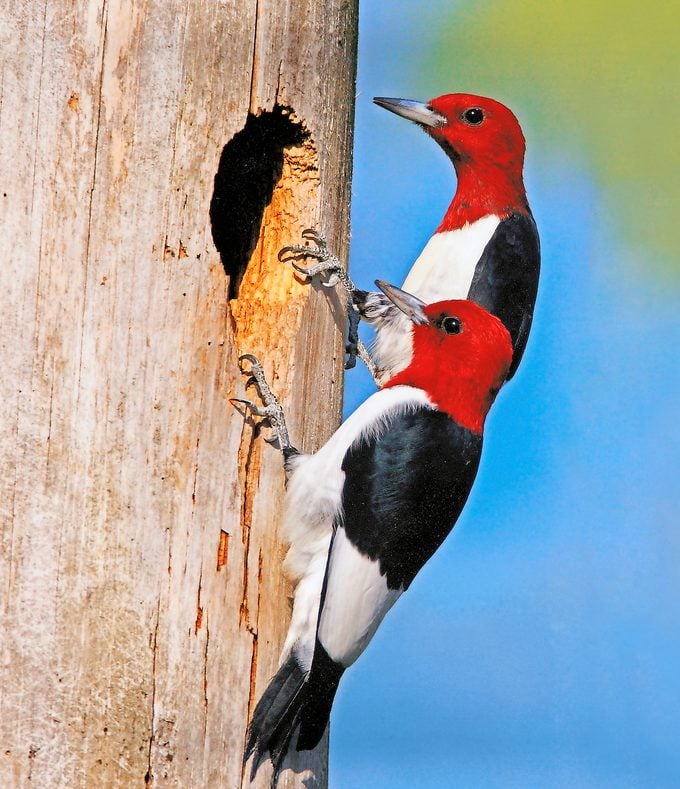
Left alone, a mature tree may develop natural cavities in spots where branches have fallen off or large limbs have decayed from within. But some birds don’t wait around for these cavities to develop—they make their own. Members of the woodpecker family are expert homebuilders. They usually excavate their own nest holes, choosing spots in dead trees or limbs.
They’re quite industrious about it, too. Typically, a pair of woodpeckers will dig a new nest hole for each new brood that they raise. In fall, they also dig holes to roost in during winter. Because they tend to keep excavating new holes instead of reusing old ones, they leave behind ready-made nest sites for many other birds.
Learn all about woodpecker nests and eggs.
Fixer-Upper Cavity Nesters
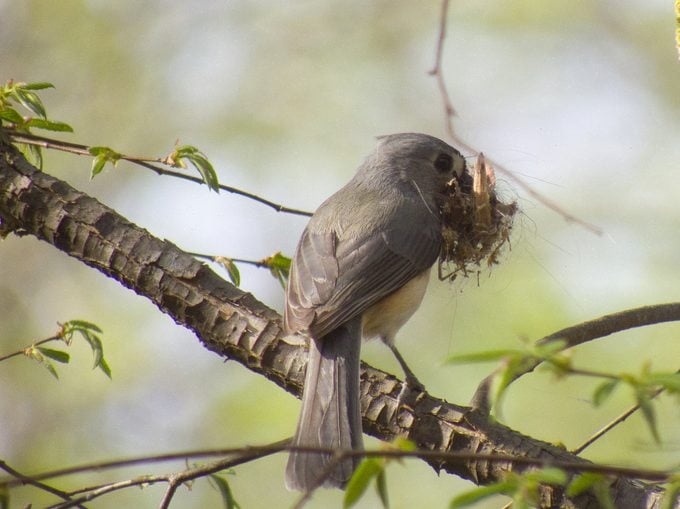
Most birds don’t have the chisel-shaped bills of woodpeckers, so they aren’t so well-equipped for excavating in dead wood. But some cavity nesters are willing to enlarge or modify existing small holes, and sometimes create their own.
Chickadees, with their tiny bills, don’t look as if they could create their own nest cavities, but they often do, enlarging a small knothole or digging a complete hole in soft, decaying wood. Nuthatches may modify existing holes or dig new ones. The oak titmouse on the West Coast will alter holes to suit its needs, but its eastern cousin, the tufted titmouse, seems to simply use holes as it finds them.
Psst—here’s everything you need to know about hummingbird nests.
Cavity Nesters That Use Birdhouses
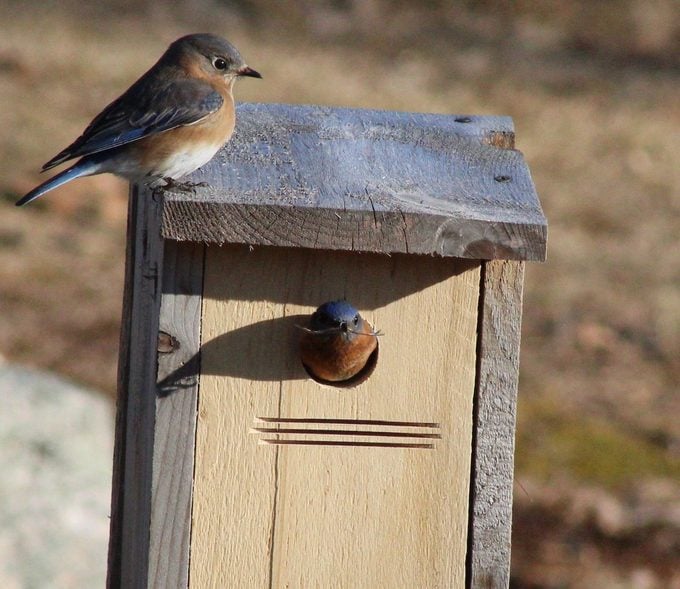
A standard birdhouse, or nest box, simply is an artificial version of a natural tree cavity. Several popular birds have adapted to nest boxes, giving backyard birders abundant opportunities for up-close views. Bluebirds are found all across the continent, and all three species—eastern, western and mountain—raise their young either in natural cavities or in nest boxes. The bluebird’s popularity has been a bonanza for the tree swallow, another cavity nester, which uses holes of the same size.
Learn how to make a DIY bluebird house.
The purple martin is another classic birdhouse species in eastern North America. Practically all martins east of the Rockies now nest in multiroomed martin houses, sometimes with dozens of pairs in the same structure. In the West, some martins still nest in the traditional way, in cavities in dead trees—or, in the Arizona desert, in holes in giant cactus.
Wrens: The Flexible Cavity Nesting Birds
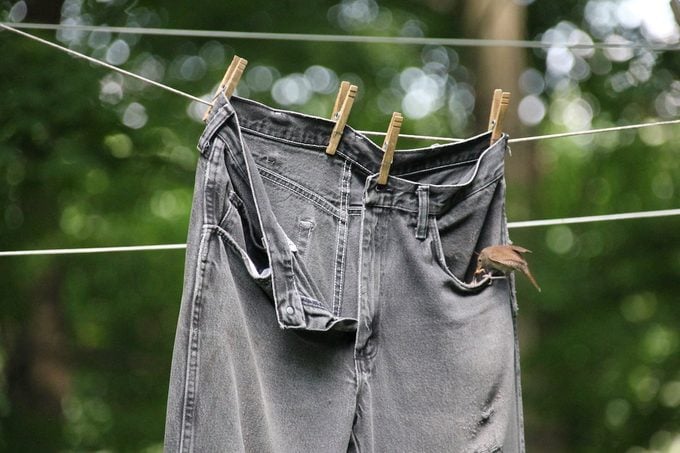
Wrens are mostly shades of brown and gray, but they make up for their lack of bright colors with high-energy personalities and musical songs. Five species—about half our wrens—are cavity nesters. The house wren is widespread from coast to coast, while the Bewick’s wren lives mainly in the West, and the Carolina wren is most common in the Southeast. The tiny winter wren nests in the Northwoods, while its close relative, the Pacific wren, resides in the Far West.
These birds loosely define a “cavity” for nesting. They will nest in standard tree holes or nest boxes, but they also use crevices in buildings, hollows among the roots of fallen trees, old flowerpots in sheds—just about any enclosed space. House wrens have even been found building nests in the pockets of trousers hanging on clotheslines!
Can you move a bird nest near your home?
Surprising Cavity Nesting Birds
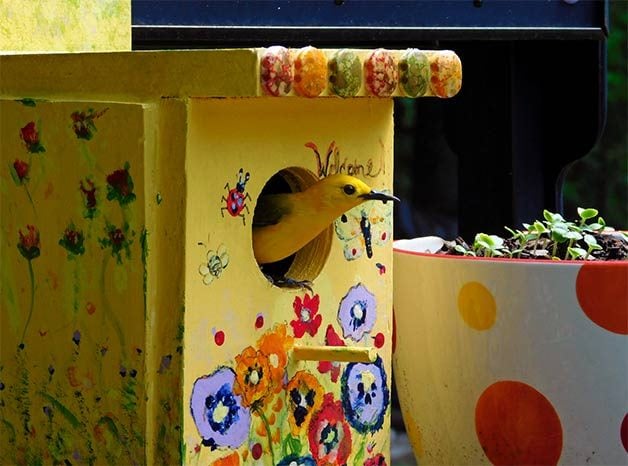
Several other types of birds are also among the cavity nesting crew. Various kinds of owls nest in cavities, including little screech-owls, which may lurk unnoticed in holes even in suburban backyards. The American kestrel, a colorful little falcon, uses tree holes or nest boxes in open country. Flashy wood ducks adopt tree hollows or nest boxes close to the water; hooded mergansers, common goldeneyes and buffleheads are among the other cavity-nesting waterfowl.
Those are all fairly large birds, but our last two examples are tiny. Of the 55 species of warblers in North America, only two nest in cavities: Lucy’s warbler, a pale gray bird of southwestern deserts, and the prothonotary warbler, a brilliant golden sprite of southeastern swamps. They remind us that nature is full of surprises. They also remind us that, regardless of what your dentist might say, cavities can be good things!
Learn how to attract owls to nest in your backyard.
Why Trust Us
For nearly 30 years, Birds & Blooms, a Trusted Media Brand, has been inspiring readers to have a lifelong love of birding, gardening and nature. We are the #1 bird and garden magazine in North America and a trusted online resource for over 15 million outdoor enthusiasts annually. Our library of thousands of informative articles and how-tos has been written by trusted journalists and fact-checked by bird and garden experts for accuracy. In addition to our staff of experienced gardeners and bird-watchers, we hire individuals who have years of education and hands-on experience with birding, bird feeding, gardening, butterflies, bugs and more. Learn more about Birds & Blooms, our field editor program, and our submission guidelines.
